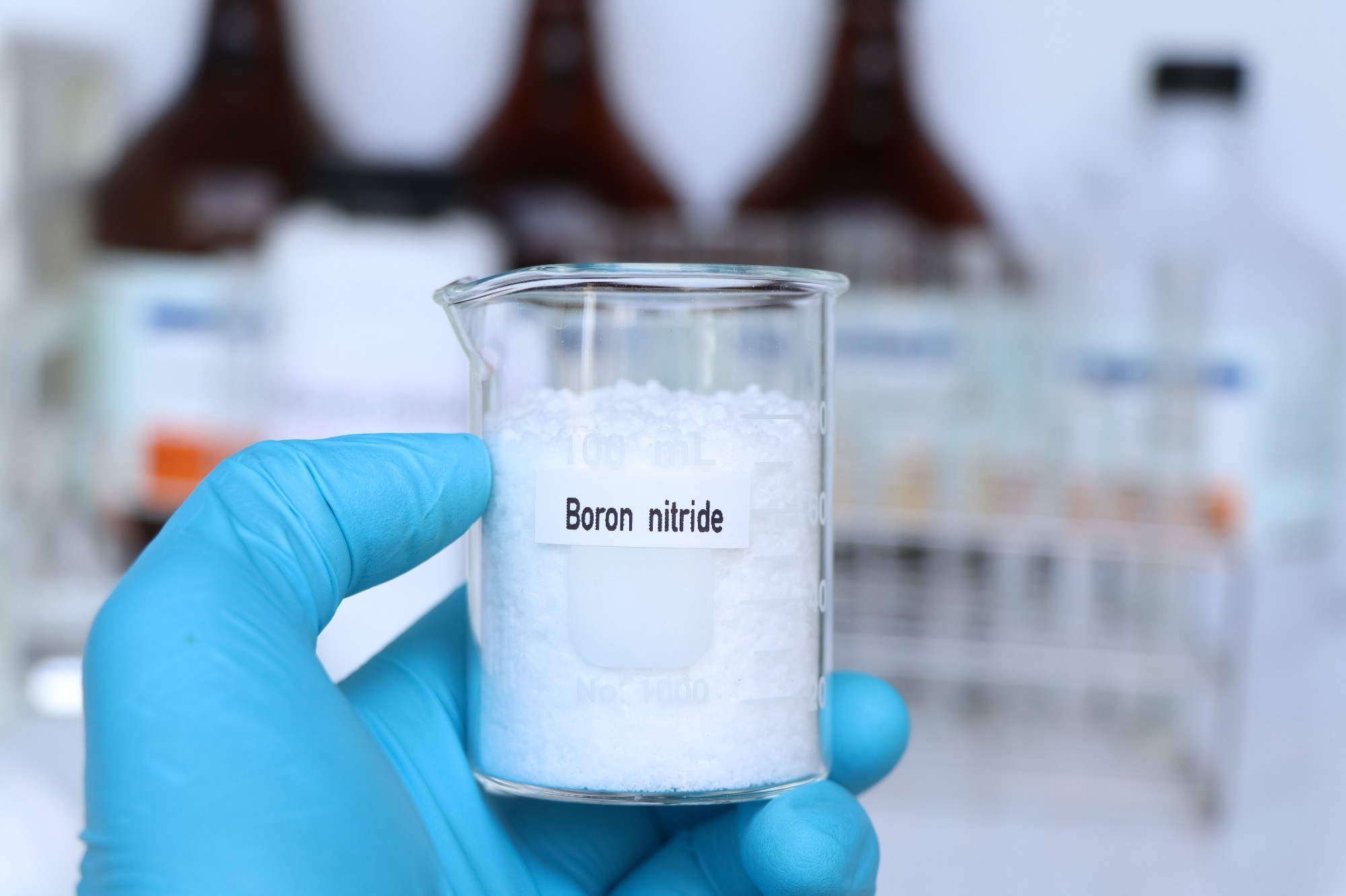In an article recently published in the journal Nature Materials, researchers demonstrated quantum coherent control of a single-photon-emitting defect spin in hexagonal boron nitride at room temperature.

Image Credit: chemical industry/Shutterstock.com
Background
For scalable spin-photon quantum interfaces, it is essential to generate single photons that facilitate optical access to electronic spins. These systems are vital for the deployment of quantum sensors and repeaters. An ideal spin-photon interface should maintain prolonged spin coherence and support coherent, efficient optical transitions on scalable material platforms. This should be achievable without stringent operating conditions, such as the need for applied magnetic fields or cryogenic temperatures.
Materials with atomic defects that feature distinct spin and optical transitions have attracted considerable interest. However, only a handful of these defects in silicon carbide and diamond can be individually addressed and maintain quantum coherent spins at ambient temperature, often exhibiting complex optical properties. Therefore, both the discovery of new material systems and the enhancement of existing ones are crucial steps towards achieving the ideal spin-photon interface with improved performance.
Layered Materials as a Promising Solution
Layered materials are promising as a new quantum platform as their inherent suitability for hybrid device integration, deterministic defect creation, and large-area growth enable accelerated scalability. Hexagonal boron nitride is a wide-bandgap layered material hosting several lattice defects that emit throughout the near-infrared and visible spectral regions.
The first hexagonal boron nitride defects' spin signature was detected from ensembles that were attributed to a boron vacancy with a broad spectrum of optical emission centered at 800 nm. Due to their low optical quantum efficiency, these defects were subject to spin manipulation and initialization only on an ensemble level. However, defects within the visible spectrum generate tunable, bright, and single-photon emission of 80 % at room temperature into the zero-phonon line.
Early studies on these optically isolated defects used optically detected magnetic resonance (ODMR) to capture spin signatures. However, these signatures existed only under a finite magnetic field, which indicated a spin-half system (S = 1/2) or a spin-triplet (S = 1) with low zero-field splitting.
The Proposed Approach
In this study, researchers showed quantum coherent control of a single-photon-emitting defect spin in a layered van der Waals material/hexagonal boron nitride under ambient conditions. Specifically, they implemented coherent spin control of single-photon-emitting defects that were individually addressable at room temperature.
The multilayer hexagonal boron nitride investigated in this work was grown through a metal-organic vapor phase epitaxy using ammonia and a carbon precursor. This resulted in spin-active and single-photon-emitting defects related to carbon. Continuous-wave ODMR was measured to identify the ground-state spin resonances.
Researchers identified that the carbon-related defect had a spin-triplet electronic ground-state manifold. Vector-magnetic-field-dependent ODMR measurements were performed to confirm the S = 1 assignment, and microwave-based Ramsey interferometry was performed to derive the single defect's bare inhomogeneous dephasing time.
Moreover, a basic multipulse dynamical decoupling protocol without pulse corrections or phase control for spin coherence measurements was used. Researchers also analyzed the hyperfine coupling nature and obtained an insight into the defect's chemical structure.
Significance of the Study
Using angle-resolved magneto-optical measurements, researchers displayed a spin-triplet/S = 1 ground-state spin manifold with 1.96 GHz zero-field splitting. The defect's principal symmetry axis was located in the plane of the hexagonal boron nitride layers, which indicated a low-symmetry chemical structure.
The spin coherence was predominantly governed by coupling to only a few proximal nuclei and was prolonged by decoupling protocols. Results from the microwave-based Ramsey interferometry revealed an inhomogeneous dephasing time of 100 ns. Additionally, the continuously driven spin Rabi coherence time exceeded 1 μs with no magnetic field at room temperature.
This drive-prolonged coherence time indicated that the electronic spin could be shielded from its reversibly decohering environment/the nuclei. This was also confirmed by researchers through standard dynamical decoupling pulse protocols, which yielded a spin-echo coherence time of 200 ns, exceeding 1 μs with ten refocusing pulses. Thus, the coherence time scaling with the number of decoupling pulses, coupled with the ODMR signal's fine structure, indicated hyperfine coupling to only a few inequivalent boron and nitrogen nuclei.
To summarize, this research paves the way for realizing a room-temperature spin qubit coupled to a multi-qubit quantum register/sensor with nanoscale sample proximity.
An optically addressable S = 1 defect with proximal nuclei demonstrating quantum coherence under ambient conditions and zero magnetic fields in a layered material offers immense promise for quantum technologies.
Specifically, this system can provide feasible quantum repeater hardware scaling for quantum networks under ambient operation conditions when integrated quantum photonics systems deliver the required optical quality.
Journal Reference
Stern, H. L., Gu, Q., Eizagirre Barker, S., Powell, O. F., Deng, X., Fraser, S. A., Follet, L., Li, C., Ramsay, A. J., Tan, H. H., Aharonovich, I., Atatüre, M. (2024). A quantum coherent spin in hexagonal boron nitride at ambient conditions. Nature Materials, 1-7. https://doi.org/10.1038/s41563-024-01887-z, https://www.nature.com/articles/s41563-024-01887-z
Disclaimer: The views expressed here are those of the author expressed in their private capacity and do not necessarily represent the views of AZoM.com Limited T/A AZoNetwork the owner and operator of this website. This disclaimer forms part of the Terms and conditions of use of this website.
Article Revisions
- May 22 2024 - Title changed from "Quantum Spin Control in Boron Nitride at Room Temperature" to "Boron Nitride: The Secret to Room-Temperature Quantum Spin Control"